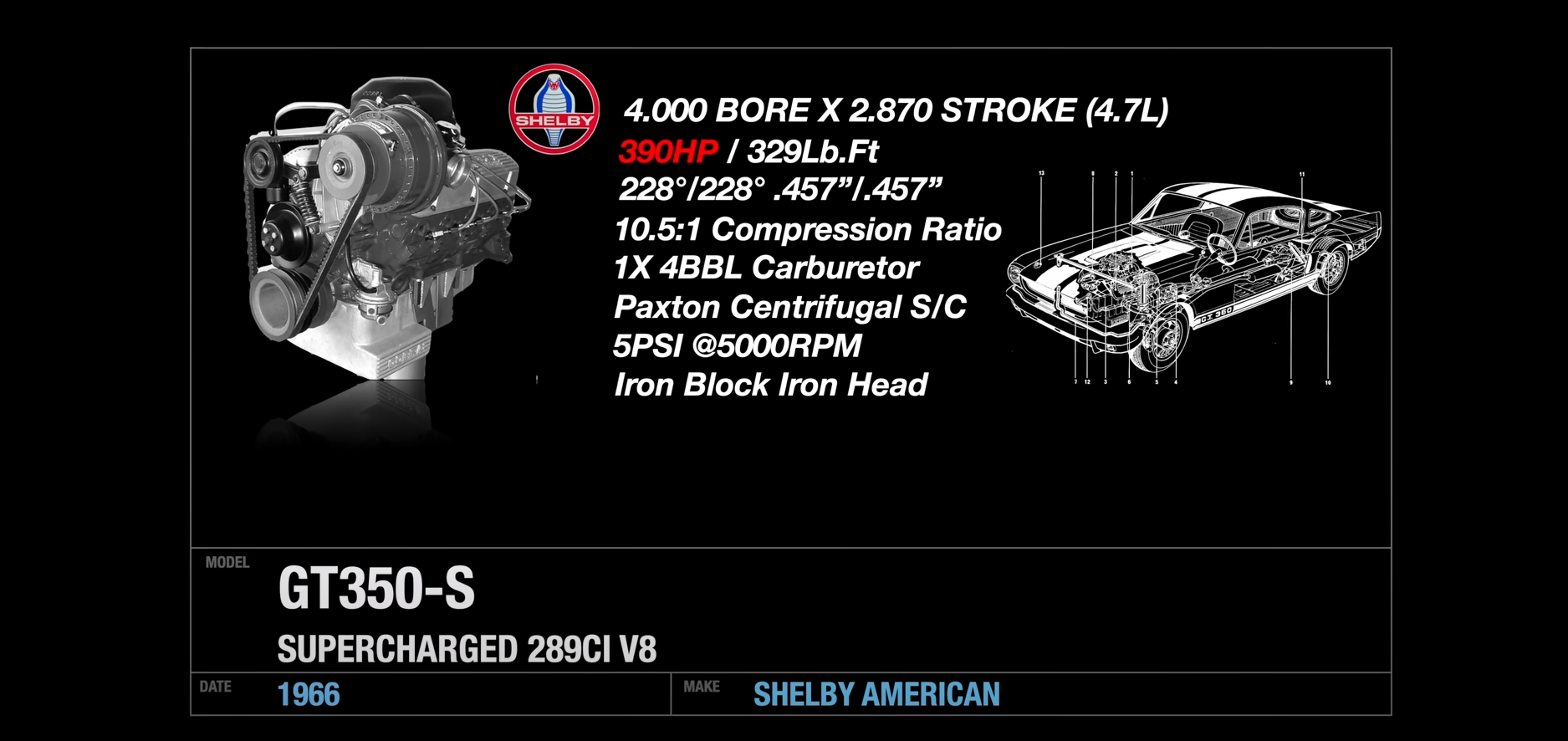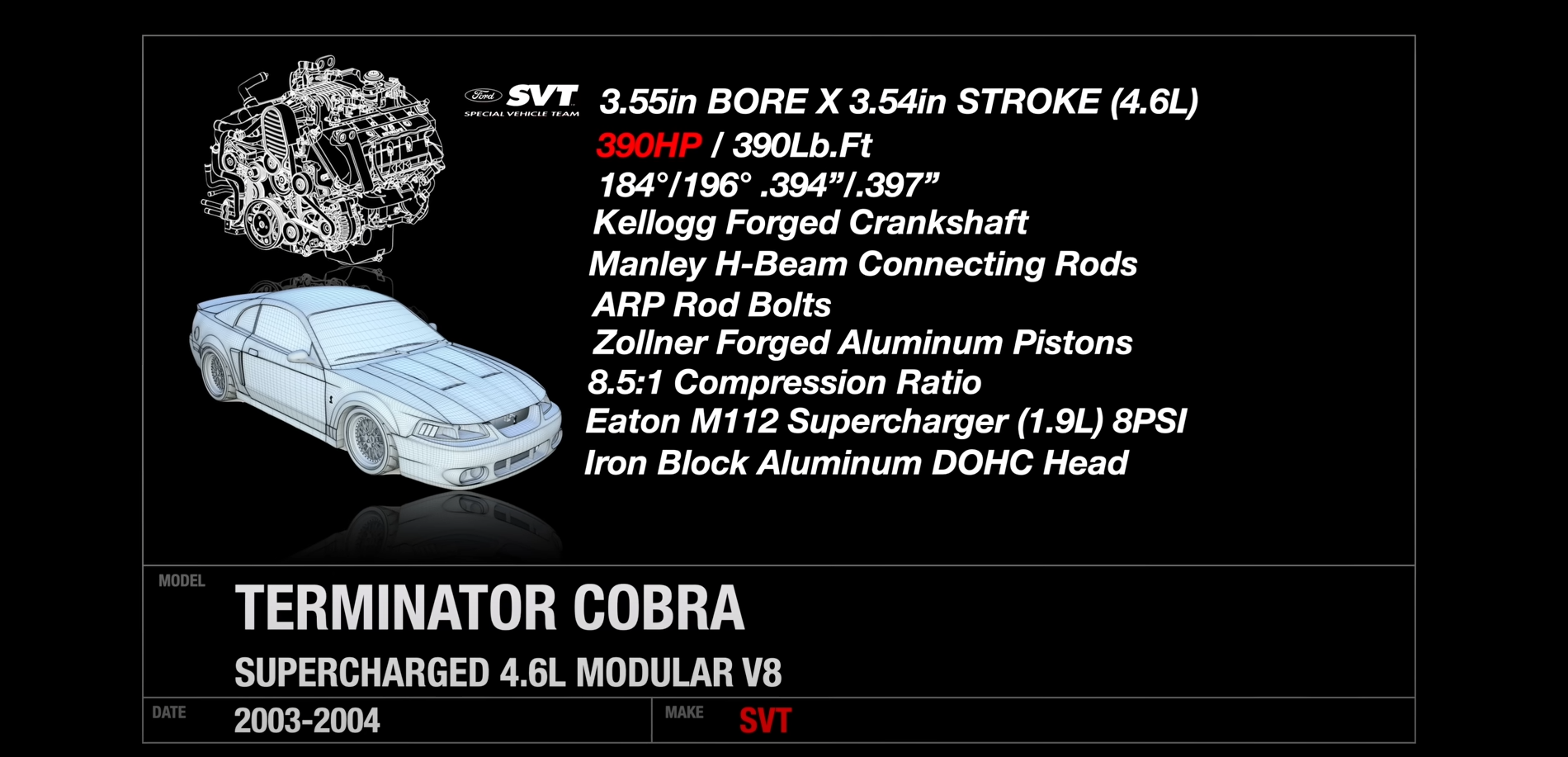Supercharged Mustangs have made a lasting mark on car culture and the performance world. From their early days in the 1960s with special Shelby models to the powerful machines of the 2000s and beyond, these cars brought impressive horsepower and became tough competition for rivals. Their evolution over time, responding to both industry trends and rivals’ improvements, shows the Mustang’s role in shaping the modern performance landscape.
The story behind these cars includes many changes and innovations, from the introduction of superchargers to advances in engine and design technology. As different models set new standards, they pushed other carmakers to keep up, leading to famous rivalries and the rise of even stronger cars. Each generation of the supercharged Mustang adds to its legacy as a benchmark for street-legal power.
Key Takeaways
- Supercharged Mustangs paved the way for high-performance street cars.
- Changes and upgrades have kept the Mustang ahead of industry trends.
- Each model added to the Mustang’s lasting impact on car culture.
How Supercharged Mustangs Began
Shelby’s Early Mustangs and Centrifugal Power
In 1966, Shelby American offered a Paxton centrifugal supercharger as an upgrade for the GT350’s 289 V8 engine. This belt-driven supercharger delivered about 5 pounds of boost, raising the engine’s power from 306 up to 390 horsepower. Some carefully tuned versions even exceeded 450 horsepower.
- Boost Level: 5 psi
- Horsepower Range: 306–450+ hp
- Top Speed: 150 mph
- 0–60 mph Time: Mid 5 seconds
The Paxton supercharger was a $600 option at the time and made these cars stand out among other muscle cars. Only 46 supercharged GT350s were sold between 1966 and 1967, making them rare today.
Supercharging’s Role in 1960s High-Performance Cars
Adding a supercharger set a new benchmark for Mustang performance in the 1960s. The upgrade made the GT350 much quicker than most competitors. This influenced how other car makers looked at performance upgrades, helping to push the limits for street cars.
Influence on Performance:
| Feature | Naturally Aspirated GT350 | Supercharged GT350 |
|---|---|---|
| Horsepower | 306 hp | 390–450+ hp |
| 0–60 mph (seconds) | About 7 | Mid 5s |
| Top Speed (mph) | 120-130 | 150 |
The move to superchargers in Mustangs didn’t just change Ford’s lineup; it pushed other car companies to follow, shaping the muscle car era’s focus on more power and better technology.
SVT and How the Mustang Cobra Changed Over Time
Issues with the 1999 Cobra and Ford’s Response
When Ford released the new Mustang Cobra in 1999, people quickly noticed it did not seem as powerful as Ford claimed. Tests showed it struggled to keep up with rivals like the Camaro and Trans Am, both packing strong V8 engines. The main issue was that the intake, exhaust, and computer tuning did not let the engine deliver its promised horsepower.
Ford responded by stopping sales and recalling all 1999 Cobras. They fixed them with a new intake, updated computer parts, and a better exhaust. This brought the car closer to its rated 320 horsepower. However, even after these changes, some felt the Cobra’s reputation was hurt.
Creating the Supercharged Cobra: The “Terminator” Project
After the problems with the 1999 Cobra, Ford’s Special Vehicle Team (SVT) began work on a new, much stronger Mustang. Inside the team, this project was called “Terminator.” The engine block was switched from aluminum to iron for extra strength, even though it made the car heavier by about 60 pounds. The cylinder heads came from a different Ford vehicle—the Aviator SUV’s V8—while the camshafts were shared with other luxury models.
Strong hardware was needed for the power SVT planned. Standard connecting rods did not hold up in testing, so the team used Manley H-beam rods with high-strength bolts. The engine got forged aluminum pistons and a low compression ratio of 8.5:1, perfect for supercharging. The supercharger chosen was an Eaton unit, also found in the supercharged Ford Lightning truck, giving the Cobra 8 psi of boost. In this setup, the Terminator engine produced 390 horsepower and 390 lb-ft of torque. Every engine was hand-assembled in Michigan.
Key parts used in the Terminator Cobra:
| Component | Sourced from | Reason |
|---|---|---|
| Engine block | Iron (custom) | Extra strength |
| Cylinder heads | Lincoln Aviator | Dual overhead cam design |
| Camshafts | Lincoln Navigator | 32-valve performance |
| Connecting rods | Manley H-beam | High torque resistance |
| Pistons | Forged aluminum | Boost support |
| Supercharger | Eaton M112 (1.9L) | Reliable forced induction |
Major Engineering Changes in SVT Cobra Models
SVT’s work brought several important upgrades to the Mustang Cobra line over the years. They used stronger engine parts—like forged pistons and better rods—to handle much greater horsepower. The Terminator set a new baseline, with many owners able to increase power even more by changing pulleys and injectors.
Later, the Cobra’s engine technology kept advancing. The 2007-2009 GT500 got a bigger, better-breathing engine with improved cylinder heads and a bigger supercharger, pushing power up to 500 hp. By 2013, the GT500’s all-aluminum 5.8L V8 had a high-flow supercharger, producing up to 662 hp—the most from any production V8 at that time.
Notable SVT Cobra innovations:
- Factory supercharging on V8 engines
- Stronger forged engine internals
- Better-breathing cylinder heads
- Larger, more efficient superchargers
- Continuous increases in horsepower and torque
These changes set a new standard for muscle cars and kept pushing competitors to improve. Many of these improvements also found their way into models like the later GT500, making the Cobra and SVT’s engineering a major influence on American performance cars.
Evolution of the Latest GT500
Early GT500 Progress: 2007 to 2009
In 2007, the modern GT500 returned as the top model of the Mustang, carrying a 5.4L engine that drew inspiration from the 2005 Ford GT. This version used an iron block for extra strength, along with forged aluminum pistons and powdered metal i-beam rods to balance cost and performance. The engine’s cylinder heads had improved air flow, moving up to 274 CFM.
The supercharger was upgraded to the Eaton M122, providing 8.5 pounds of boost. As a result, the car produced 500 horsepower and 480 lb-ft of torque, making it the most powerful Mustang of its time.
| Model Year | Engine (L) | Block Material | Supercharger | Power (hp) | Torque (lb-ft) |
|---|---|---|---|---|---|
| 2007–2009 | 5.4 | Iron | M122 | 500 | 480 |
Building the 5.4L and 5.8L Powerhouses
The initial 5.4L engine in the GT500 received several updates during its run. In 2010, a new body style arrived while the engine output was increased to 540 horsepower, matching the special “King of the Road” version from previous years. By 2011, an even lighter aluminum block replaced the iron block, slashing about 102 pounds and boosting output up to 550 horsepower.
The biggest leap came in 2013 with the introduction of the 5.8L “Trinity” engine. This all-aluminum V8 featured larger pistons, a stronger crankshaft, and improved camshafts, raising the redline to 7,000 RPM. The supercharger was swapped for a TVS 2.3L unit, increasing boost to 14.7 pounds.
Notable features of the 5.8L engine:
- All-aluminum construction
- 9:1 compression ratio
- Enhanced camshafts for high RPM
- Twin Vortices Series 2300 supercharger
Performance Records and Industry Impact
The 2013 GT500, with its 5.8L engine, set a new standard by producing 662 horsepower, making it the most powerful production V8 at that time. This achievement forced competitors like Dodge and GM to rethink their strategies, eventually inspiring the creation of rival high-horsepower models.
The impact of these GT500 models included:
- Raising expectations for street-legal performance cars
- Driving competitors to develop new, more powerful engines
- Influencing the design of future Mustang models and other muscle cars
The GT500’s constant push for more power and better engineering helped shape the direction of modern American performance cars.
Trinity Period and Its Industry Effects
Launch of the 5.8L Trinity Engine
Ford Special Vehicle Team (SVT) made major changes by rolling out the 5.8-liter “Trinity” V8 for the 2013 GT500. This power plant, based on the previous 5.4L, had a larger bore and upgraded to an all-aluminum build. Upgrades included a forged steel crankshaft, bigger pistons, and a higher compression ratio of 9:1.
A new Eaton 2.3-liter Twin Vortices supercharger increased boost to 14.7 psi. Engine output reached 662 horsepower, which at the time set a record for a production V8. The Trinity V8 achieved a 7,000 RPM redline, controlled by upgraded camshafts and sophisticated engine tuning. This combination provided the GT500 with unmatched straight-line power.
Notable features of the Trinity 5.8L:
| Feature | Details |
|---|---|
| Displacement | 5.8 liters |
| Construction | All-aluminum |
| Supercharger | Eaton TVS 2300, 2.3L |
| Boost | 14.7 psi |
| Max output | 662 hp, 631 lb-ft of torque |
| Compression ratio | 9.0:1 |
| Redline | 7,000 RPM (computer-limited) |
Rivalry with Hellcat and Industry Reaction
The arrival of the 5.8L Trinity engine forced rivals to react. Dodge, already working on a 600-horsepower SRT engine, found out through testing that Ford’s GT500 was making 650 horsepower. This news prompted Dodge’s SRT team to raise their own performance targets.
The result was the creation of the supercharged 6.2L Hemi Hellcat, which was equipped with a 2.4L supercharger and produced 707 horsepower—surpassing the Trinity-powered GT500. This move redefined American muscle car competition and set new standards for factory performance.
How the market changed:
- Ford forced Dodge to increase power in the Hellcat to compete
- “Horsepower wars” between manufacturers grew, benefiting performance car buyers
- The Trinity V8 became a benchmark for supercharged factory V8 engines
Key competitors during this era:
- Trinity 5.8L (Ford): 662 hp
- GM LSA/LS9 (Chevrolet): Lower output than Trinity
- SRT Hellcat (Dodge): 707 hp
This sequence of events demonstrated how advances in one factory muscle car engine could change priorities for rivals and drive the entire industry forward.
The Next Generation: 2020 GT500
Revised Predator Power Unit
The 2020 GT500 has a 5.2-liter V8 engine, called the Predator. This engine uses a crossplane forged steel crankshaft, moving away from the flat-plane crank found in the GT350. It is built with forged steel rods and forged aluminum pistons.
Unlike some previous engines, the Predator is only port fuel injected. Variable cam timing is used on both intake and exhaust cams. This engine delivers strength and high performance for track use.
Modern Features and Speed
A big difference in the 2020 GT500 is the use of a seven-speed dual clutch transmission. This replaced the older six-speed manual, making gear changes quicker and more precise. The TVS R2650 supercharger is larger and can move more air than the older 2.3L superchargers. It creates 12 pounds of boost.
Cooling is a major focus. Multiple radiators keep temperatures low and reduce the risk of engine knock. The compression ratio is increased to 9.5:1.
Performance Highlights:
| Specification | 2020 GT500 |
|---|---|
| Horsepower | 760 hp |
| Redline | 7,500 rpm |
| Transmission | 7-speed dual clutch |
| Supercharger | TVS R2650 (12 psi) |
Changes from Past Recipes
The 2020 GT500 is different from the older supercharged Mustangs. Instead of a focus on raw street power and a manual transmission, this car is designed for both track use and everyday driving.
They moved away from the traditional manual transmission, using a dual-clutch automatic for better track times. The engine’s architecture is new, sharing parts with the GT350 but using a crossplane crank and advanced cam timing. These choices show a shift away from the earlier formula that had defined the GT500 for years.
Influence and Ongoing Effects
Supercharged Mustangs Shape the Scene
Supercharged Mustangs have made a major mark in performance car history. Early examples like the 1966 Shelby GT350 with its optional Paxton supercharger offered strong power and created a new direction for the Mustang brand. Later, the SVT team used lessons from past models to introduce factory-built, supercharged Mustangs that set new standards for street-legal performance.
| Year | Model | Engine | Power Output |
|---|---|---|---|
| 1966 | Shelby GT350 (Paxton) | 289 V8 | Up to 390hp |
| 2003-2004 | SVT Cobra “Terminator” | 4.6L V8 Supercharged | 390hp |
| 2007-2014 | Shelby GT500 | 5.4L/5.8L V8 Supercharged | Up to 662hp |
| 2020 | Shelby GT500 (S550) | 5.2L V8 Supercharged | 760hp |
Each of these cars brought new technology and more power, pushing the limits for street cars.
Raising the Bar for Rivals
Supercharged Mustangs became the benchmark other companies tried to beat. When the 2003-2004 SVT Cobra outperformed its rivals at a lower price, it forced other brands to respond. The introduction of the 2013-2014 GT500, with its 662 horsepower, led Dodge engineers to develop more powerful engines, eventually resulting in the Dodge Hellcat.
Key points:
- The performance arms race in the car industry grew stronger.
- Mustang set a high standard with every new generation.
- Competing brands responded with bigger, more powerful engines.
Long-Lasting Enthusiast Following
These Mustangs have loyal fans due to their balance of power and upgrade potential. The engines were strong and allowed for easy modifications, making them popular choices for car enthusiasts of all ages.
- Popular in car clubs, forums, and events.
- Still sought after in the used car market.
- Supported by a wide range of aftermarket parts.
Their impact carries on, as the love for supercharged Mustangs is passed from one generation of enthusiasts to the next.








